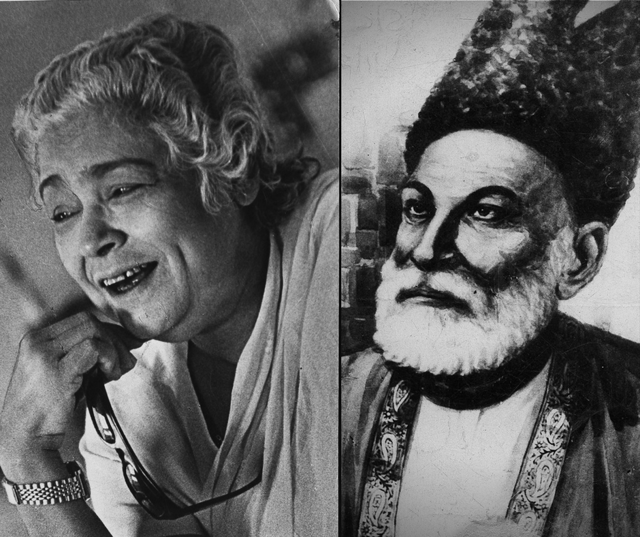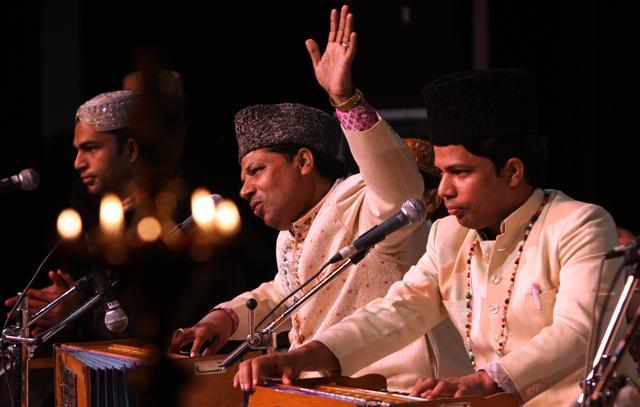Why Urdu needs no reviving
Urdu is not dying. Rather, the language is thriving on fresh curiosity sparked by a flood of events in recent years.
There is something in the air. A clamour like never before, an appetite that seems insatiable, an interest that is growing more robust by the day — in Urdu! And no, it’s not the anaemic longing of a despairing lover nor the fretful cries of an impoverished poet, bemoaning a long-delayed inquilab that has caught people’s imagination. Instead, there is an exuberant curiosity about the many different facets of Urdu zubaan and tehzeeb: its prose and its poetry, its passions and its politics.

Gone are the popular tropes associated with Urdu — stereotyped in the Hindi film industry’s Muslim socials of the 1960s and responsible, in large part, for perpetuating a cliched view of Urdu speakers as poets and nawabs steeped in nostalgia and pathos or, worse still, shervani-clad heroes and heroines in ghararas singing qawwalis. Partly due to a well-meaning but limited view and partly due to a deliberate ‘othering’, for far too long Urdu has been viewed through a monochromatic lens: as an exotic language, a sweet but useless vestige of a decadent feudal culture; or an outright alien, associated as it has been with one religious group: the Indian Muslims

From the margins...
When did this anomaly begin to correct itself? When did Urdu creep from the margins of our collective consciousness — for I do believe it never really died or went away after the partition nor was it ever the language of India’s Muslims alone — and regain its rightful place? When, and how, did this healthy interest in Urdu — not just in its poetry that can convey a million moods but in its prose, especially its full-bodied and flavoursome fiction — reveal itself?
While there can be no single event or precise turning point, there can be several reasons for what is evidently a growing interest in all things Urdu. The much-maligned Hindi film industry has been steadily and stoically doing its bit to ensure that Urdu words and phrases never go out of currency. Lyricists such as Gulzar, Sahir Ludhianvi, Kaifi Azmi and Javed Akhtar, guaranteed that mellifluous yet meaningful film songs, reached the nooks and crannies of popular imagination.
Fragments of songs lie embedded in people’s memories, like seeds waiting to germinate in a fertile soil. Politicians of all ilks deliver the inadvertent but highly effective ‘booster shot’ when they resort to sher-o-shairi on the floor of the Parliament, in public rallies or in political discourse.
Then there’s the inclusion of writers such as Saadat Hasan Manto, Ismat Chughtai, Rajinder Singh Bedi and Krishan Chandar in university syllabi and the increasing popularity of their translated works.

...To the mainstream
But the single most significant cause for the dramatic flowering of Urdu in present times is its programming. The buzz around Urdu is not because of government initiatives or classroom teaching — for alas, the script languishes while the language blooms — but because of a flood of Urdu-related events: concerts, mushairas, dastangoi performances and specially-curated sessions in almost all the major literary festivals, book launches and panel discussions.
Good, bad, indifferent, patchy, uneven, excellent — there is a range of Urdu-inspired events crowding the cultural calendar of any big city; and almost all of them draw huge crowds. Delhi offers an embarrassment of riches: at least three mega mushairas with lavish pandals and corporate sponsors. a flood of dastangoi performances, numerous stand-alone events and the Urdu equivalent of the Jaipur Literature Festival, Jashn-e Rekhta, in its third year now.

An “Urdu sampler”
Hindustani Awaaz, which I set up in 2003, to create a space for Urdu in mainstream cultural hubs across Delhi, has done its bit to pull Urdu out of the thrall of ghettoes — the anjumans, academies and departments — who have, for far too long, been either benevolent despots or unimaginative plodders. Run with no resources except ingenuity and persistence, Hindustani Awaaz relies solely on the goodwill of a growing band of Urdu enthusiasts.
Its latest offering, Afreen, Afreen, has been conceptualised as a taster’s menu, a sampler, a smorgasbord of the many flavours, voices, themes, tones and topics in Urdu. It will have day-long sessions — comprising readings and recitations but mercifully no panel discussions or paper readings — on themes as diverse as wit, humour and satire, dissent, erotica, piety and modernism.
The idea is to give young audiences a taste of the many delights contained within the literary culture of Urdu and to prove that there is always something for everyone’s taste in Urdu’s vast repertoire. As Urdu’s best-loved poet, Mirza Ghalib, put it:
“Dekhna taqreer ki lazzat ke jo uss ne kaha
Maine yeh jaana ke goya yeh bhi mere dil mein hai”
Look at the pleasure of speech for what she /he said
I began to feel that this, too, is in my heart
Rakhshanda Jalil is a writer, translator and literary historian. She is the founder of Hindustani Awaaz.
The programme for Afreen, Afreen includes performances of dastangoi and qawwali; and readings from the works of humourist Dilawar Figar, poet Parveen Shakir, short-story writer Naiyar Masud and revolutionary Mughal poet Mir JafarZatalli among others. Sohail Hashmi, a leading authority on Delhi, Jamia Milia Islamia professor Danish Iqbal, Pakistani poet Fahmida Riaz and other poets and writers will be reading acclaimed fiction and poetry.
What: Afreen, Afreen: A day-long celebration of Urdu
When: February 4, 11 am to 8.30 pm
Where: Oxford Bookstore, N-81, Connaught Circus
Nearest metro station: Barakhamba Road
Entry is free
RSVP 9953970829 or rsvp@oxforddel@apeejaygroup.com





